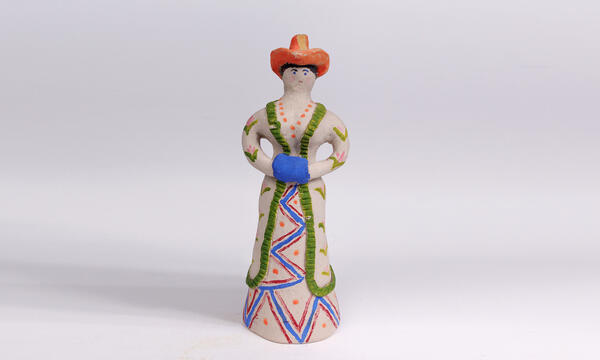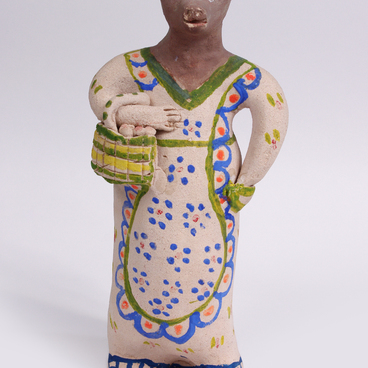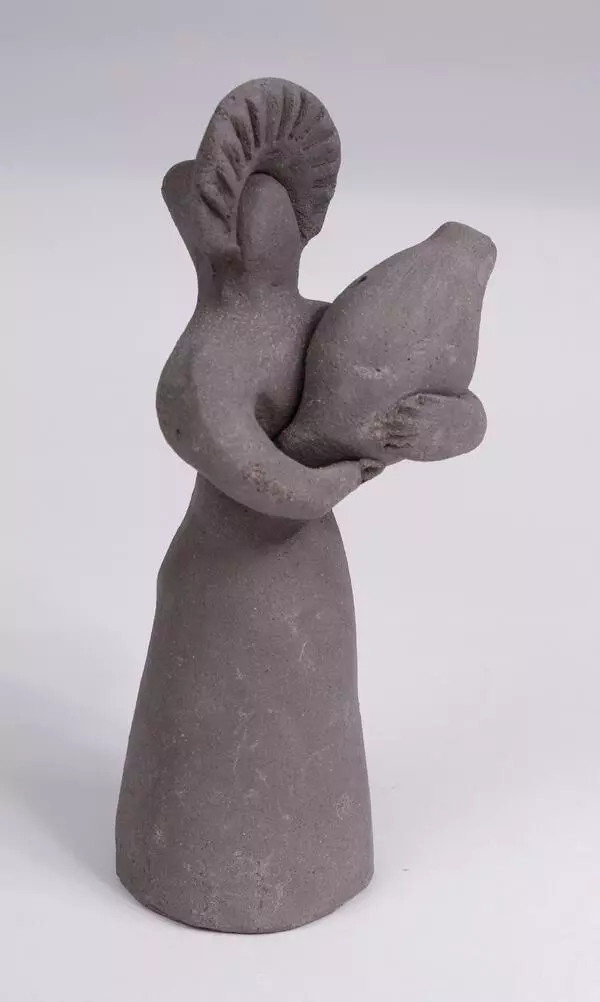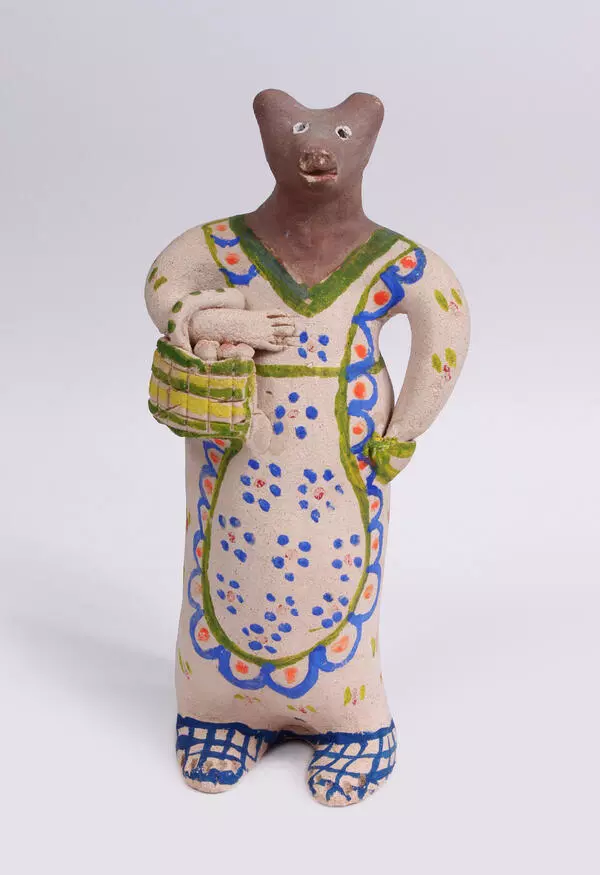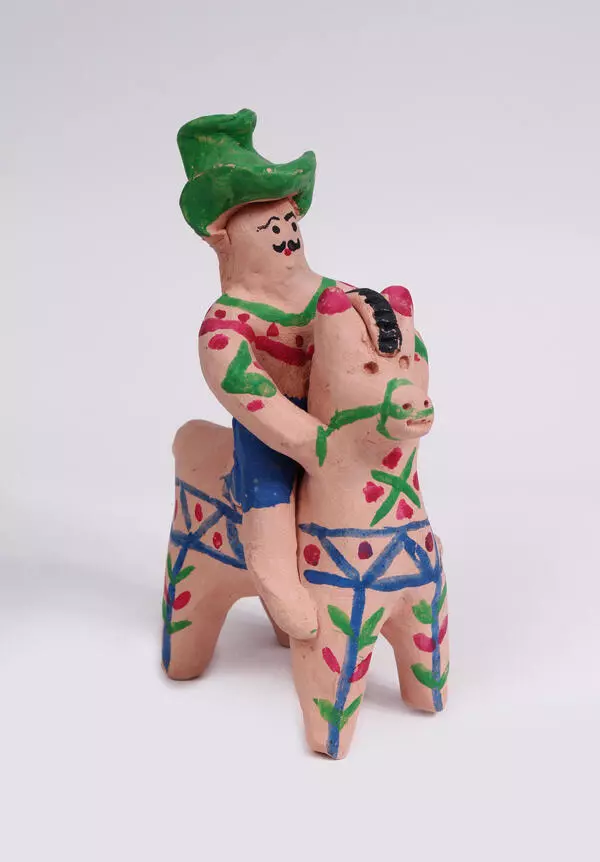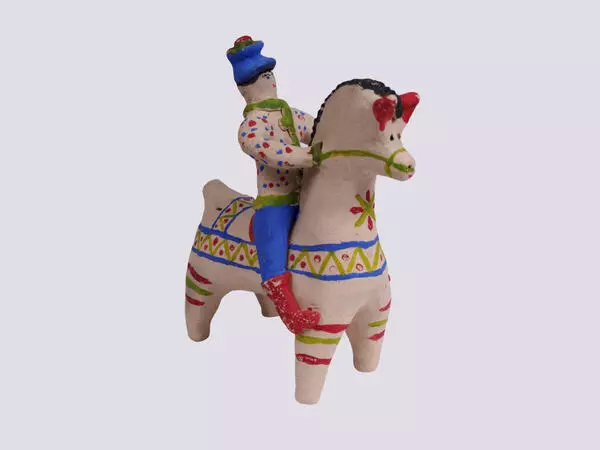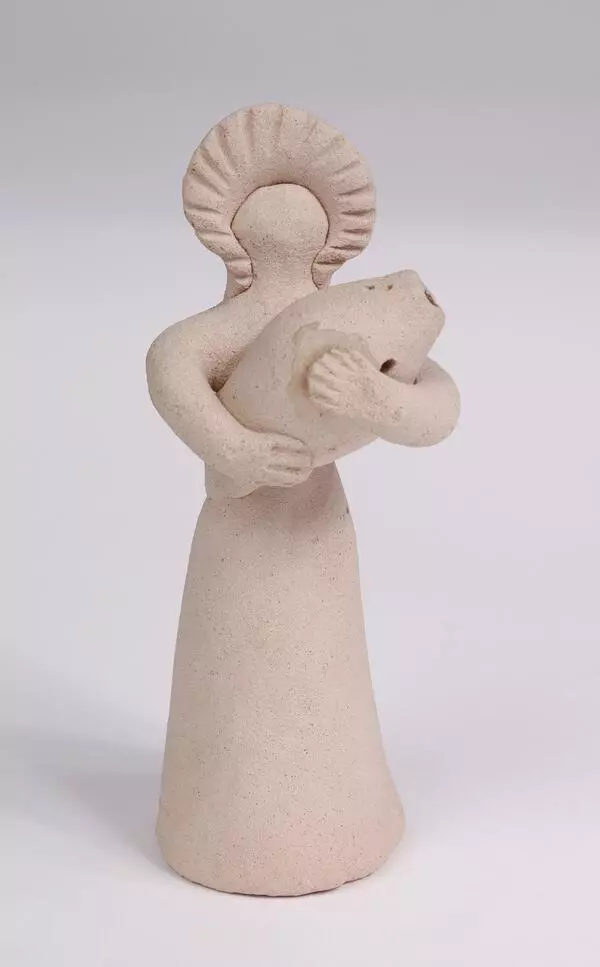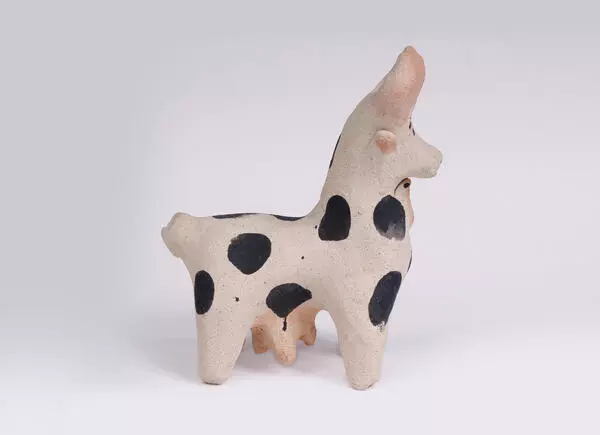The hereditary craftswomen Olga and Natalia Goncharova created the figurine of a damsel with a blue muff. They dressed the damsel in a long white ‘dushegreya’ (jacket) with pink and green flowers and green trim. She wears a bright orange hat with a green feather. Compared with other toys, this damsel is quite big. The Goncharova sisters made such figurines very rarely. As a rule, they did it at the request of collectors.
Locals reminisced that sometimes one could see big clay Cossacks or ‘women’ sold at the market. The last potter of Stary Oskol, Dmitriy Raspopov said that the artisans made big figurines before big fairs. These figurines played the role of Stary Oskol ‘trademark’. Once the Stary Oskol potters chose a place for trading at the fair, they would erect a high pole and tie a clay toy to its top. The visitors could immediately see where the Stary Oskol potters were selling their goods and go in that direction in order to buy the best tableware in the region. When all the jugs, pots, and bowls were sold, the figurine from the pole’s top was also put on the counter. But more often, it was just given as a present to a random child. Dmitriy Raspopov told that village potters often exchanged colored clay items for chicken eggs. And a goose egg could be exchanged for two simple clay toys or one Cossack on horseback.
Olga and Natalia Goncharova carefully preserved the Stary Oskol art traditions. Their father, Mikhail Kuzmich, was a third-generation potter. He started working around 1895 and succeeded in his father’s family business. According to his relatives, he was the most literate person in the Cossack Sloboda. The whole district admired his wonderful handwriting and asked him to write petitions and other official papers.
Little Olga and Natasha sculpted toys together with their elder sister Evdokia and their mother Anastasia Pavlovna. In the beginning, they did it just for fun, but then they started making toys for sale. The girls sold them at the local market and prepared bigger batches for large fairs. They used the clay that was available at home after their father allowed them to take it. After their parents died in the 1930s famine, trading toys was the only thing that helped the sisters to survive.
Locals reminisced that sometimes one could see big clay Cossacks or ‘women’ sold at the market. The last potter of Stary Oskol, Dmitriy Raspopov said that the artisans made big figurines before big fairs. These figurines played the role of Stary Oskol ‘trademark’. Once the Stary Oskol potters chose a place for trading at the fair, they would erect a high pole and tie a clay toy to its top. The visitors could immediately see where the Stary Oskol potters were selling their goods and go in that direction in order to buy the best tableware in the region. When all the jugs, pots, and bowls were sold, the figurine from the pole’s top was also put on the counter. But more often, it was just given as a present to a random child. Dmitriy Raspopov told that village potters often exchanged colored clay items for chicken eggs. And a goose egg could be exchanged for two simple clay toys or one Cossack on horseback.
Olga and Natalia Goncharova carefully preserved the Stary Oskol art traditions. Their father, Mikhail Kuzmich, was a third-generation potter. He started working around 1895 and succeeded in his father’s family business. According to his relatives, he was the most literate person in the Cossack Sloboda. The whole district admired his wonderful handwriting and asked him to write petitions and other official papers.
Little Olga and Natasha sculpted toys together with their elder sister Evdokia and their mother Anastasia Pavlovna. In the beginning, they did it just for fun, but then they started making toys for sale. The girls sold them at the local market and prepared bigger batches for large fairs. They used the clay that was available at home after their father allowed them to take it. After their parents died in the 1930s famine, trading toys was the only thing that helped the sisters to survive.
